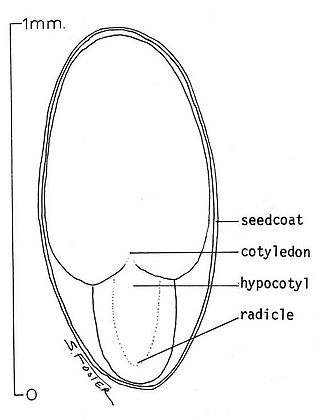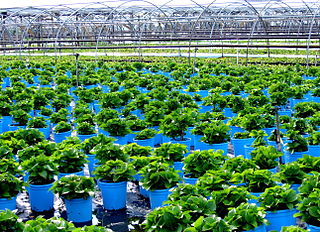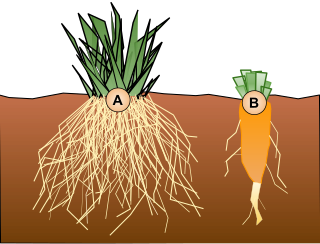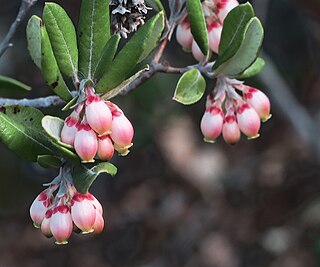
In botany, a seed is a plant embryo and food reserve enclosed in a protective outer covering called a seed coat (testa). More generally, the term "seed" means anything that can be sown, which may include seed and husk or tuber. Seeds are the product of the ripened ovule, after the embryo sac is fertilized by sperm from pollen, forming a zygote. The embryo within a seed develops from the zygote and grows within the mother plant to a certain size before growth is halted.

A cotyledon is a significant part of the embryo within the seed of a plant, and is defined as "the embryonic leaf in seed-bearing plants, one or more of which are the first to appear from a germinating seed." The number of cotyledons present is one characteristic used by botanists to classify the flowering plants (angiosperms). Species with one cotyledon are called monocotyledonous ("monocots"). Plants with two embryonic leaves are termed dicotyledonous ("dicots").

Tubers are a type of enlarged structure used as storage organs for nutrients in some plants, usually stems, but some definitions refer to roots. Tubers help plants perennate, provide energy and nutrients, and are a means of asexual reproduction.

Germination is the process by which an organism grows from a seed or spore. The term is applied to the sprouting of a seedling from a seed of an angiosperm or gymnosperm, the growth of a sporeling from a spore, such as the spores of fungi, ferns, bacteria, and the growth of the pollen tube from the pollen grain of a seed plant.

The hypocotyl is the stem of a germinating seedling, found below the cotyledons and above the radicle (root).

A nursery is a place where plants are propagated and grown to a desired size. Mostly the plants concerned are for gardening, forestry, or conservation biology, rather than agriculture. They include retail nurseries, which sell to the general public; wholesale nurseries, which sell only to businesses such as other nurseries and commercial gardeners; and private nurseries, which supply the needs of institutions or private estates. Some will also work in plant breeding.

Coleoptile is the pointed protective sheath covering the emerging shoot in monocotyledons such as grasses in which few leaf primordia and shoot apex of monocot embryo remain enclosed. The coleoptile protects the first leaf as well as the growing stem in seedlings and eventually, allows the first leaf to emerge. Coleoptiles have two vascular bundles, one on either side. Unlike the flag leaves rolled up within, the pre-emergent coleoptile does not accumulate significant protochlorophyll or carotenoids, and so it is generally very pale. Some preemergent coleoptiles do, however, accumulate purple anthocyanin pigments.

A taproot is a large, central, and dominant root from which other roots sprout laterally. Typically a taproot is somewhat straight and very thick, is tapering in shape, and grows directly downward. In some plants, such as the carrot, the taproot is a storage organ so well developed that it has been cultivated as a vegetable.
Plant embryonic development, also plant embryogenesis is a process that occurs after the fertilization of an ovule to produce a fully developed plant embryo. This is a pertinent stage in the plant life cycle that is followed by dormancy and germination. The zygote produced after fertilization must undergo various cellular divisions and differentiations to become a mature embryo. An end stage embryo has five major components including the shoot apical meristem, hypocotyl, root meristem, root cap, and cotyledons. Unlike the embryonic development in animals, and specifically in humans, plant embryonic development results in an immature form of the plant, lacking most structures like leaves, stems, and reproductive structures. However, both plants and animals including humans, pass through a phylotypic stage that evolved independently and that causes a developmental constraint limiting morphological diversification.
In developmental biology, photomorphogenesis is light-mediated development, where plant growth patterns respond to the light spectrum. This is a completely separate process from photosynthesis where light is used as a source of energy. Phytochromes, cryptochromes, and phototropins are photochromic sensory receptors that restrict the photomorphogenic effect of light to the UV-A, UV-B, blue, and red portions of the electromagnetic spectrum.

A seedling is a young sporophyte developing out of a plant embryo from a seed. Seedling development starts with germination of the seed. A typical young seedling consists of three main parts: the radicle, the hypocotyl, and the cotyledons. The two classes of flowering plants (angiosperms) are distinguished by their numbers of seed leaves: monocotyledons (monocots) have one blade-shaped cotyledon, whereas dicotyledons (dicots) possess two round cotyledons. Gymnosperms are more varied. For example, pine seedlings have up to eight cotyledons. The seedlings of some flowering plants have no cotyledons at all. These are said to be acotyledons.
Imbibition is a special type of diffusion that takes place when liquid is absorbed by solids-colloids causing an increase in volume. Water surface potential movement takes place along a concentration gradient; some dry materials absorb water. A gradient between the absorbent and the liquid is essential for imbibition. For a substance to imbibe a liquid, there must first be some attraction between them. Imbibition occurs when a wetting fluid displaces a non-wetting fluid, the opposite of drainage in which a non-wetting phase displaces the wetting fluid. The two processes are governed by different mechanisms. Imbibition is also a type of diffusion since water movement is along the concentration gradient. Seeds and other such materials have almost no water hence they absorb water easily. Water potential gradient between the absorbent and liquid imbibed is essential for imbibition.
An epicotyl is important for the beginning stages of a plant's life. It is the region of a seedling stem above the stalks of the seed leaves of an embryo plant. It grows rapidly, showing hypogeal germination, and extends the stem above the soil surface. A common misconception is that the epicotyl, being closer to the apex of the plant, is the first part to emerge after germination - rather, the hypocotyl, the region of the stem between the point of attachment of the cotyledons and the root - forms a hook during hypogeal germination and pushes out of the soil, allowing the more delicate tissues of the plumules and apical meristem to avoid damage from pushing through the soil. The epicotyl will expand and form the point of attachment of the shoot apex and leaf primordia or "first true leaves". Cotyledons may remain belowground or be pushed up aboveground with the growing stem depending on the plant species in question.
Seed dormancy is an evolutionary adaptation that prevents seeds from germinating during unsuitable ecological conditions that would typically lead to a low probability of seedling survival. Dormant seeds do not germinate in a specified period of time under a combination of environmental factors that are normally conducive to the germination of non-dormant seeds.

Phytomorphology is the study of the physical form and external structure of plants. This is usually considered distinct from plant anatomy, which is the study of the internal structure of plants, especially at the microscopic level. Plant morphology is useful in the visual identification of plants. Recent studies in molecular biology started to investigate the molecular processes involved in determining the conservation and diversification of plant morphologies. In these studies transcriptome conservation patterns were found to mark crucial ontogenetic transitions during the plant life cycle which may result in evolutionary constraints limiting diversification.

Schippia concolor, the mountain pimento or silver pimeto, is a medium-sized palm species that is native to Belize and Guatemala. Named for its discoverer, Australian botanist William A. Schipp, the species is threatened by habitat loss. It is the sole species in the genus Schippia.
This page provides a glossary of plant morphology. Botanists and other biologists who study plant morphology use a number of different terms to classify and identify plant organs and parts that can be observed using no more than a handheld magnifying lens. This page provides help in understanding the numerous other pages describing plants by their various taxa. The accompanying page—Plant morphology—provides an overview of the science of the external form of plants. There is also an alphabetical list: Glossary of botanical terms. In contrast, this page deals with botanical terms in a systematic manner, with some illustrations, and organized by plant anatomy and function in plant physiology.

Xylococcus is a monotypic genus of flowering plants in the heather family which contains the single species Xylococcus bicolor, commonly known as the mission manzanita. It is a burl-forming, evergreen shrub with leathery leaves and smooth dark reddish bark. From December to February, white to pink urn-shaped flowers adorn the foliage, often attracting hummingbird pollinators. It is native to southern California and the Baja California Peninsula, south to the Sierra de la Giganta. There is growing concern over the future of this plant, referred to as the "queen of the elfin forest, " as it may possibly lose up to 88% of its habitat and its wild seedlings are failing to survive more than a full year.

Somatic embryogenesis is an artificial process in which a plant or embryo is derived from a single somatic cell. Somatic embryos are formed from plant cells that are not normally involved in the development of embryos, i.e. ordinary plant tissue. No endosperm or seed coat is formed around a somatic embryo.

The coleorhiza or root sheath is a protective layer of tissue that surrounds the radicle in monocotyledon seeds. During germination, the coleorhiza is the first part to grow out of the seed, growing through cell elongation. Soon afterwards, it is pierced through by the emerging primary root and then remains like a collar around the root base. Also the adventitious roots have a coleorhiza.














